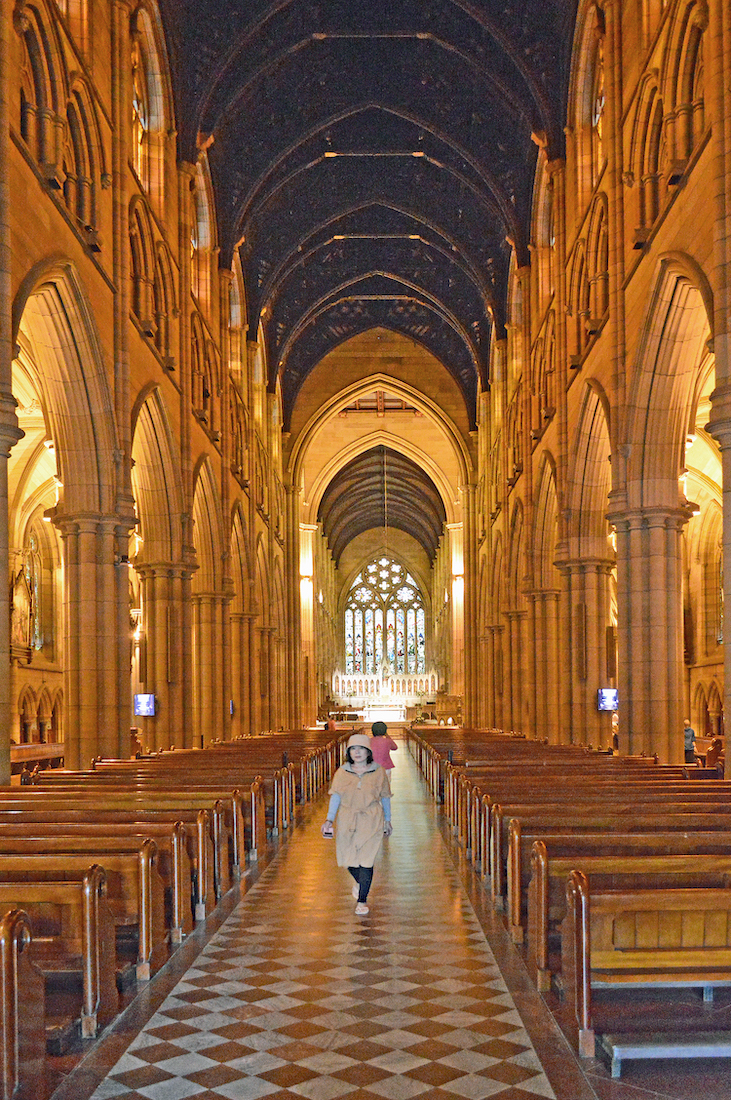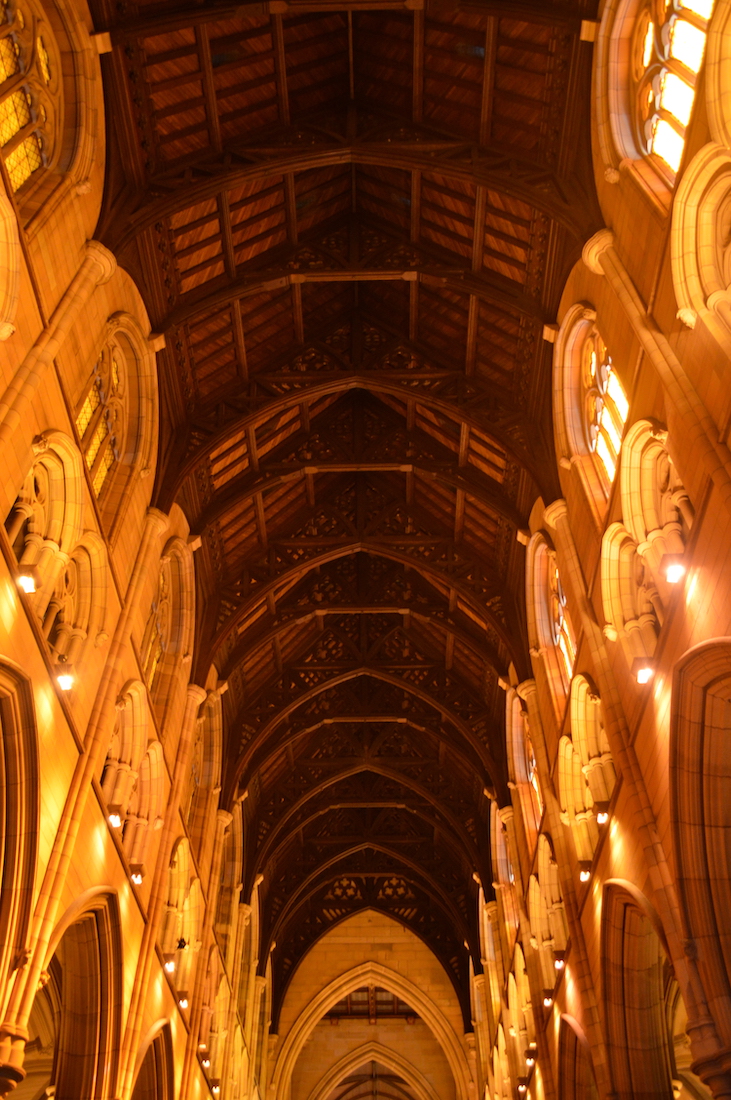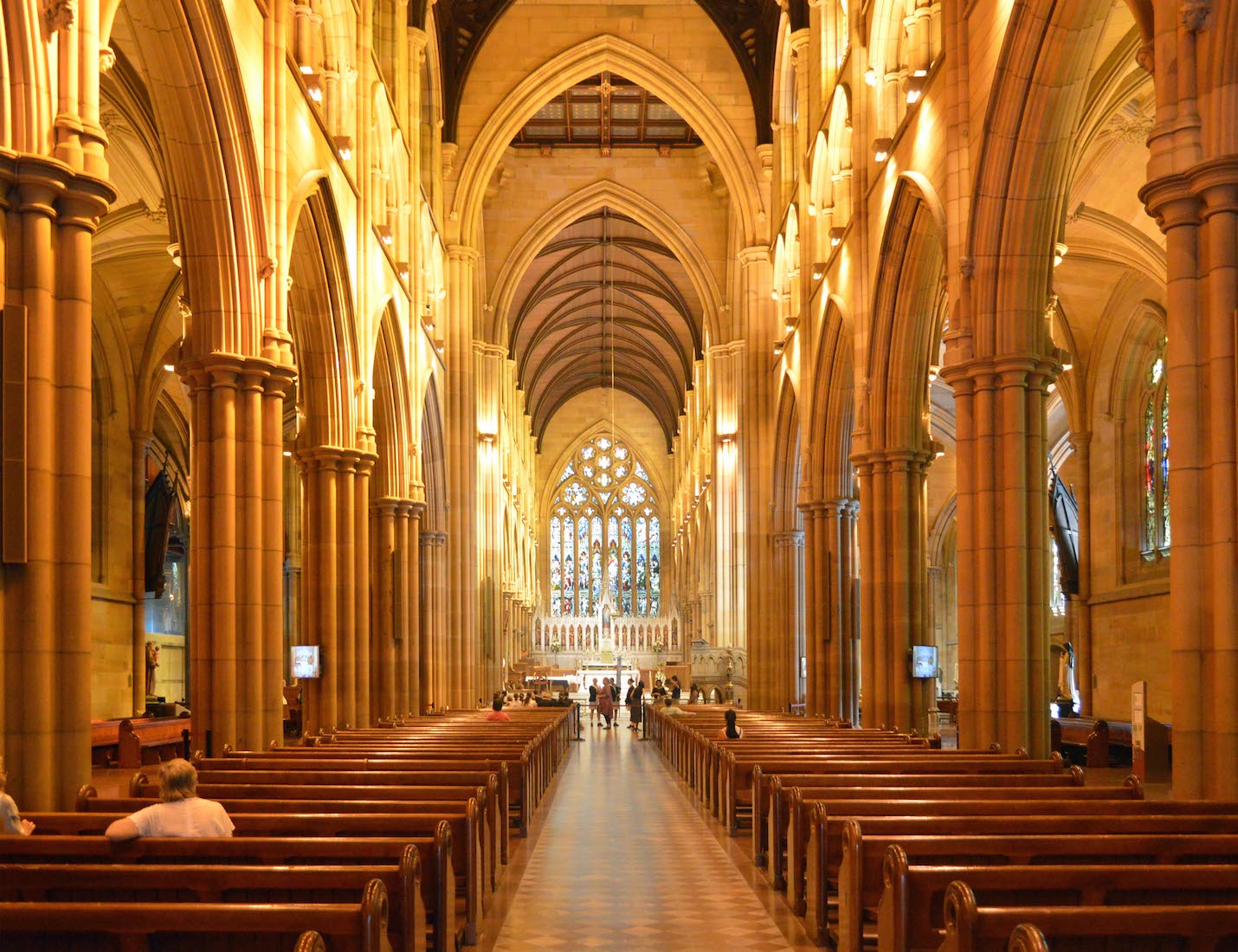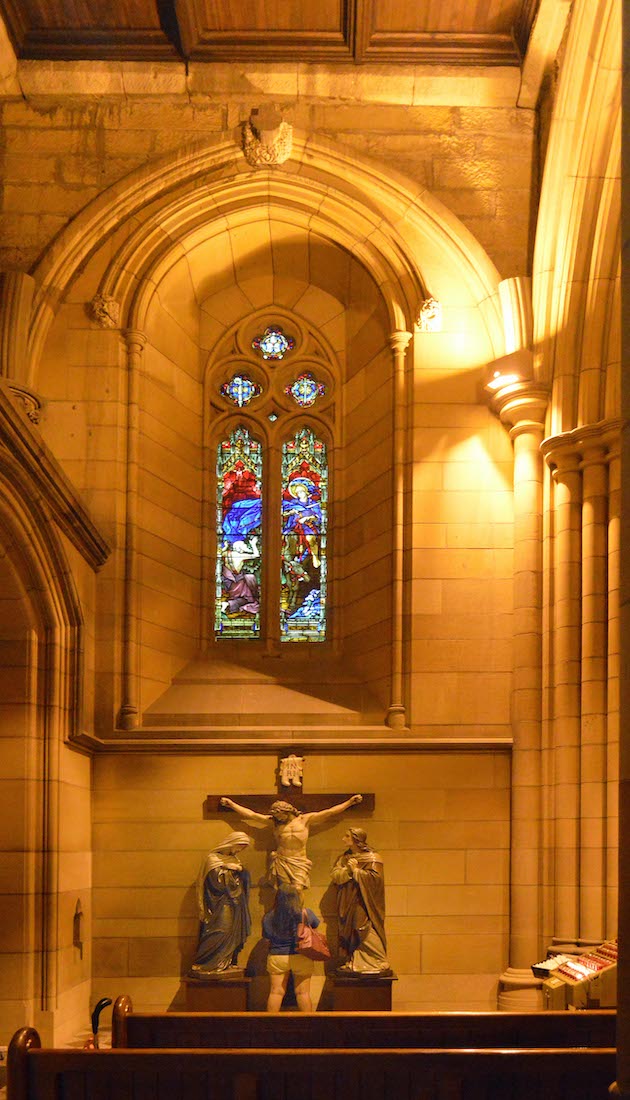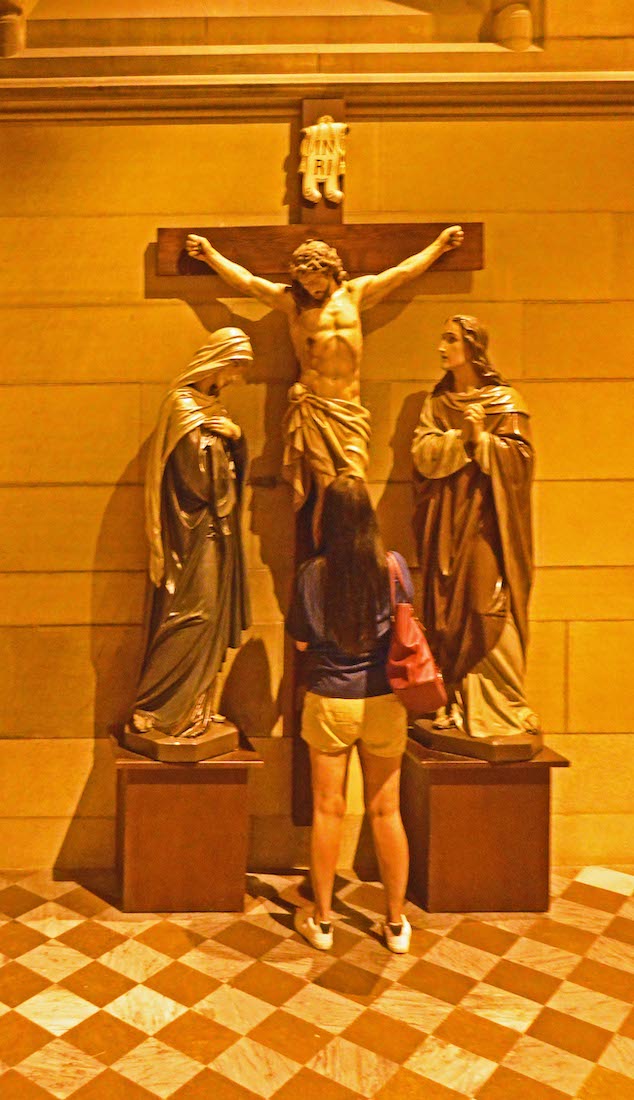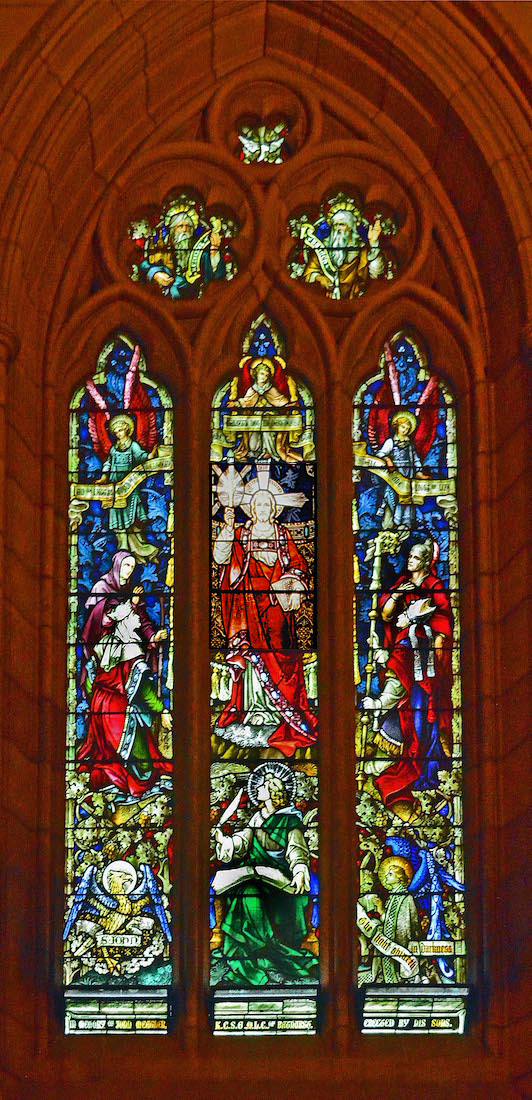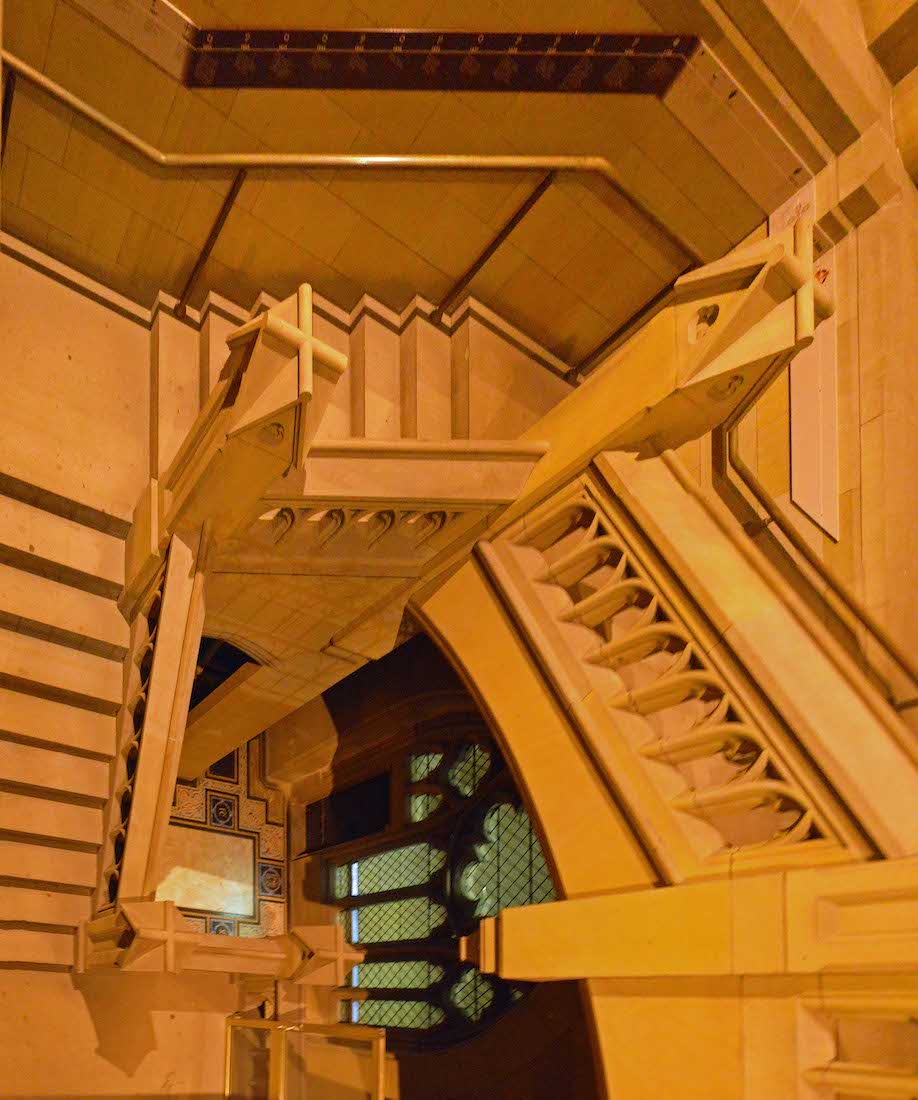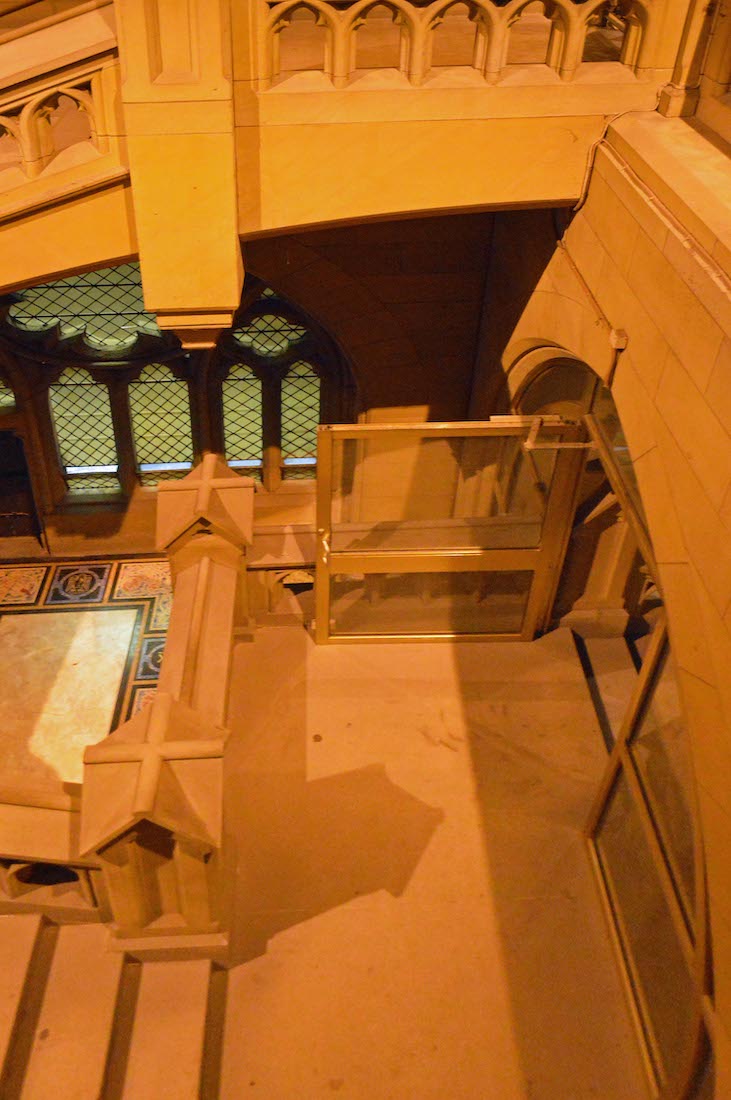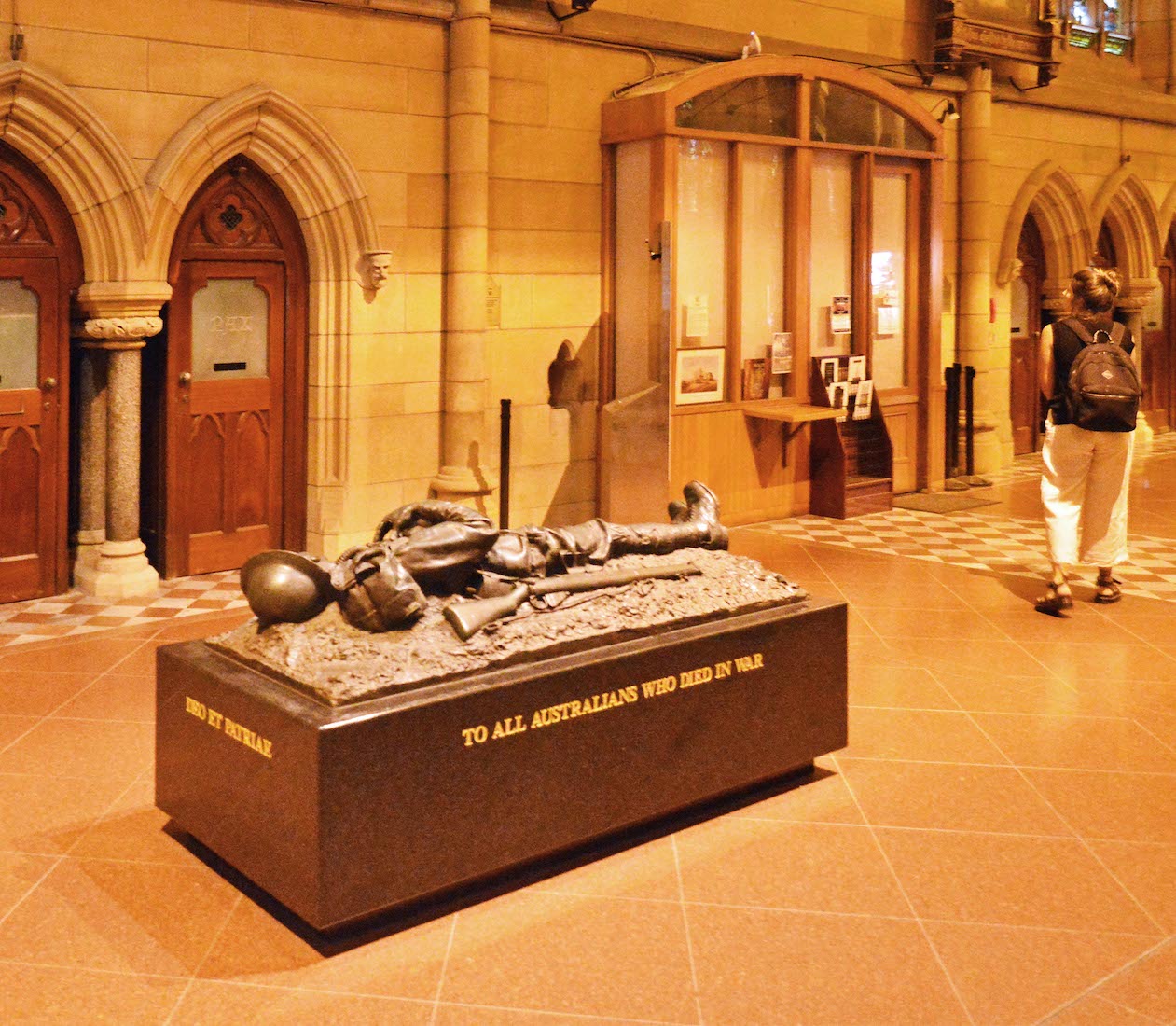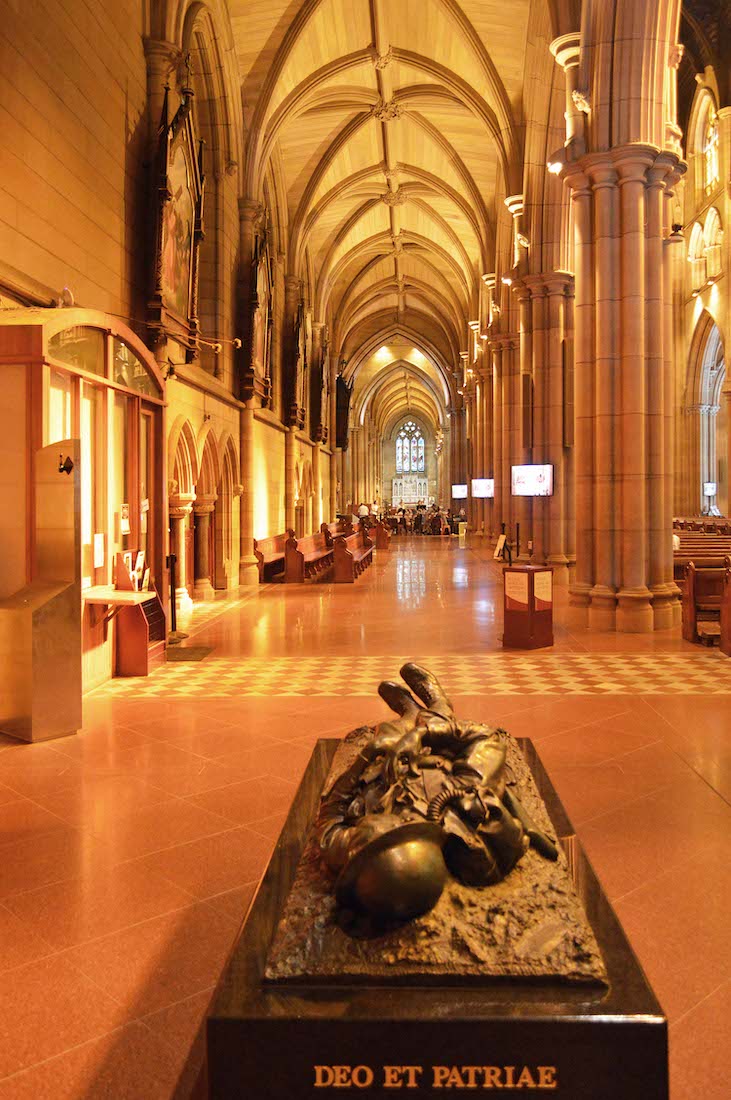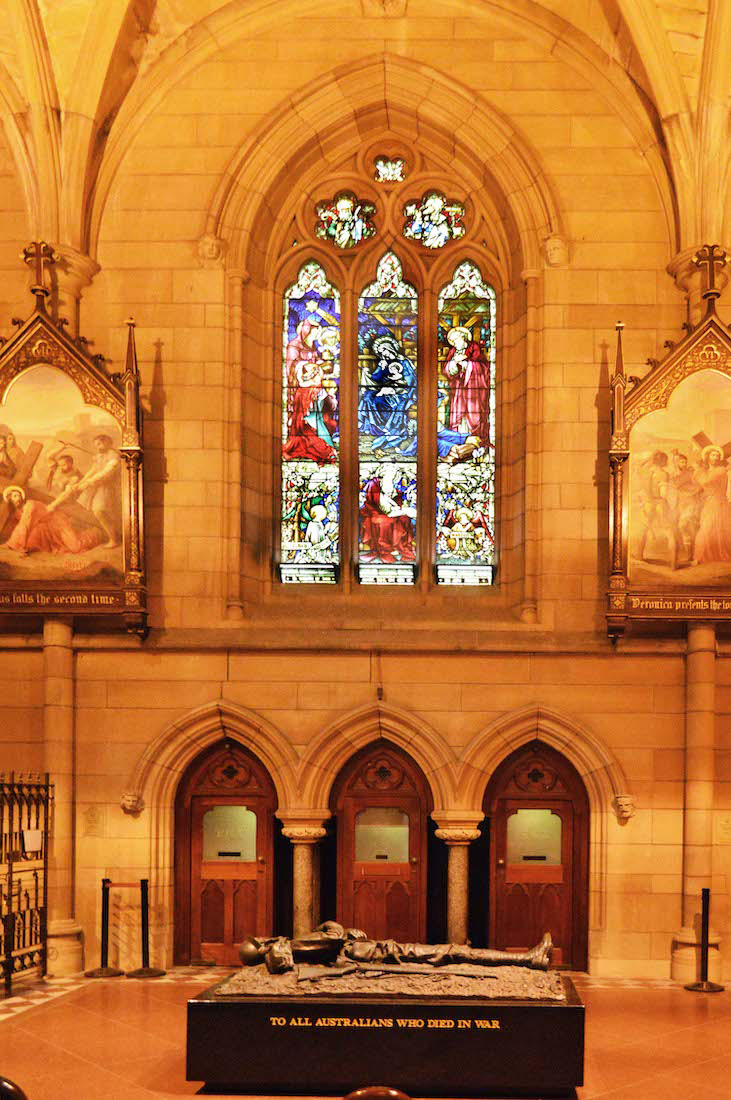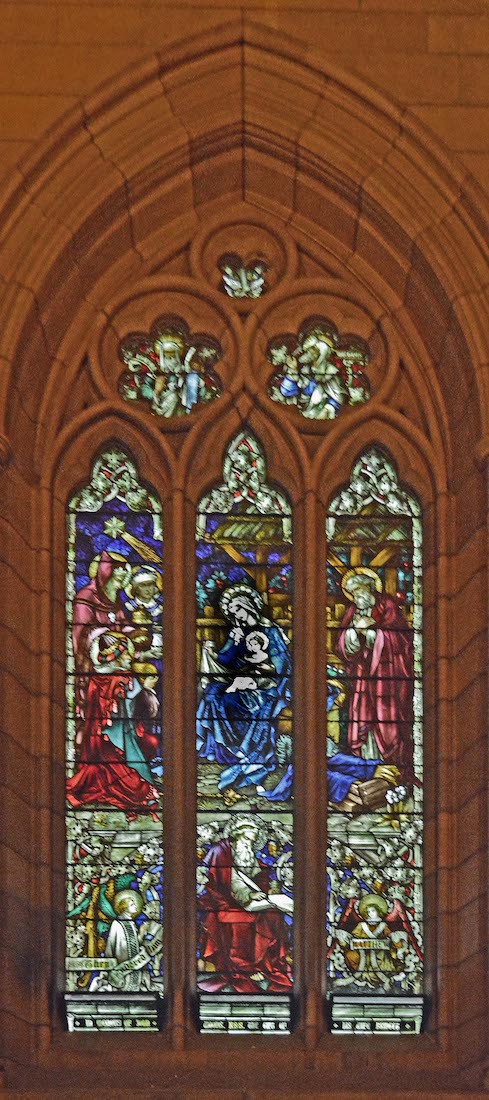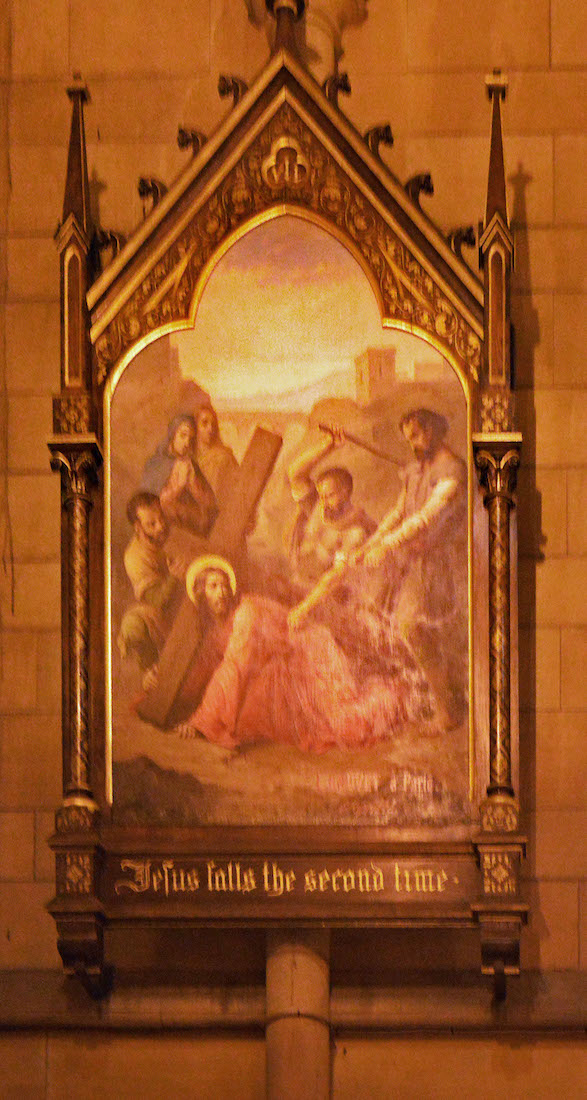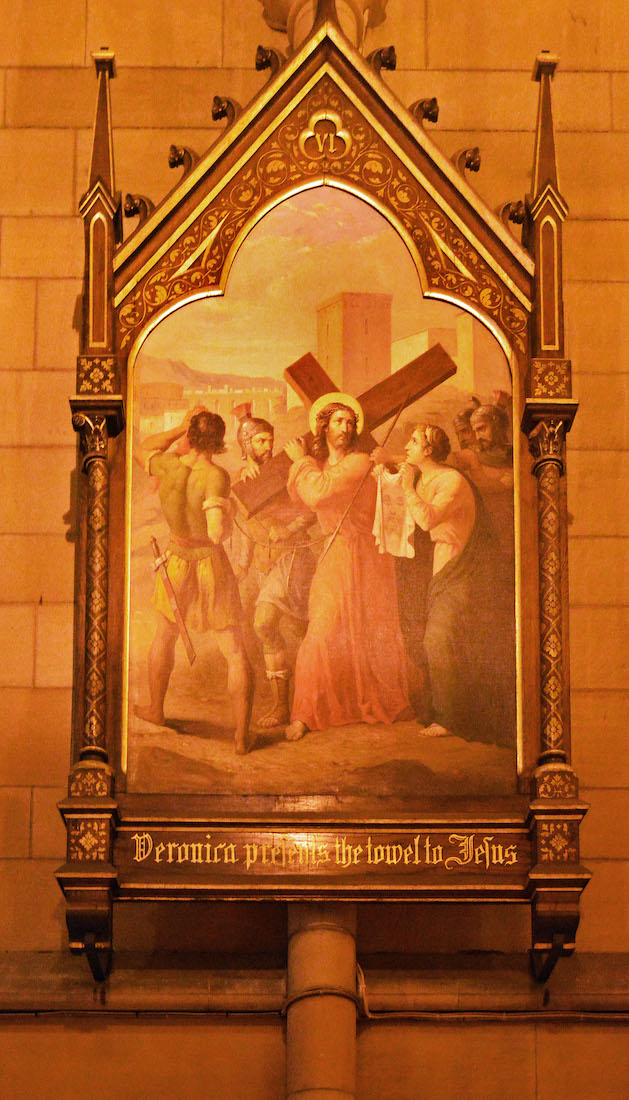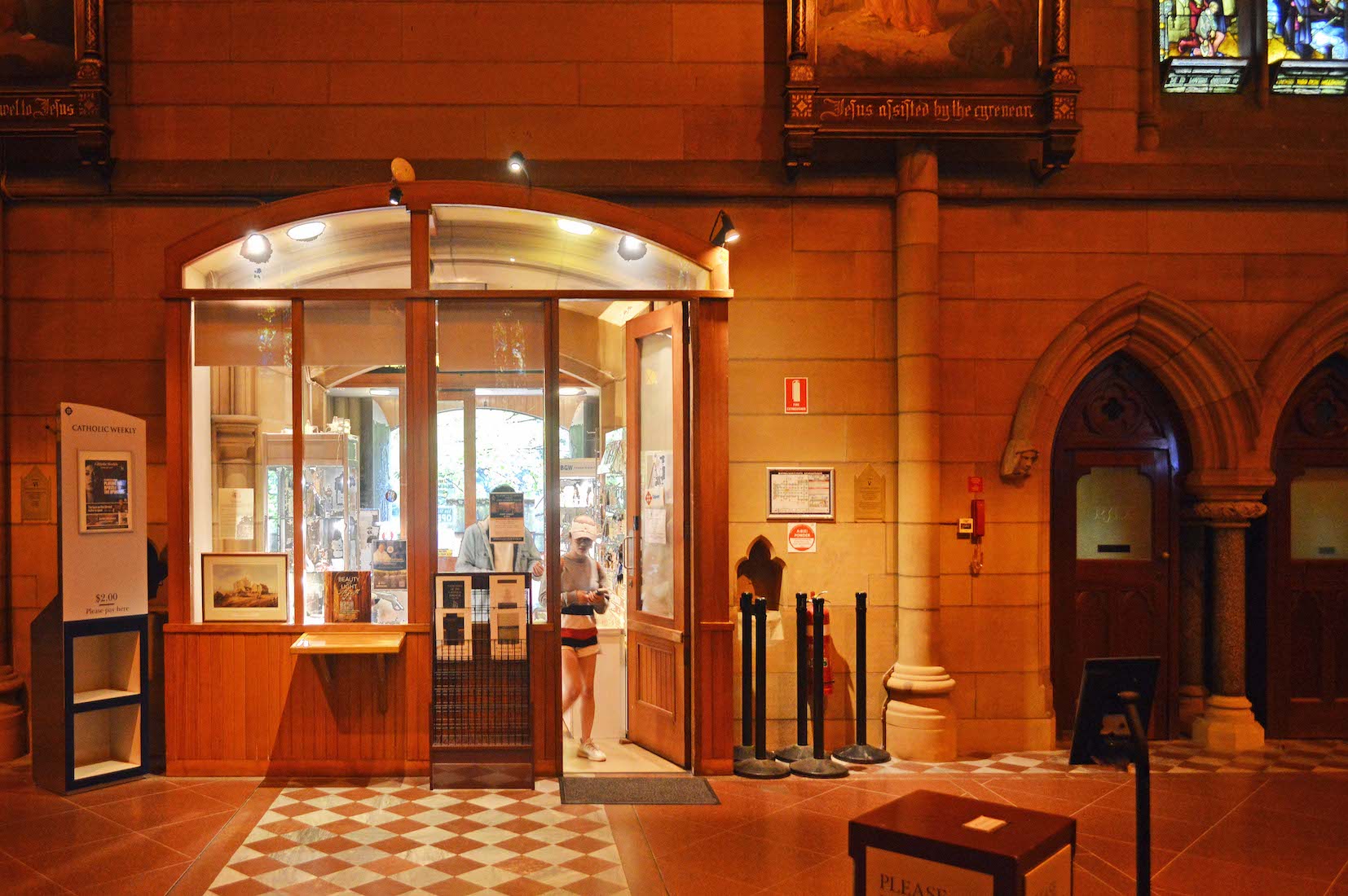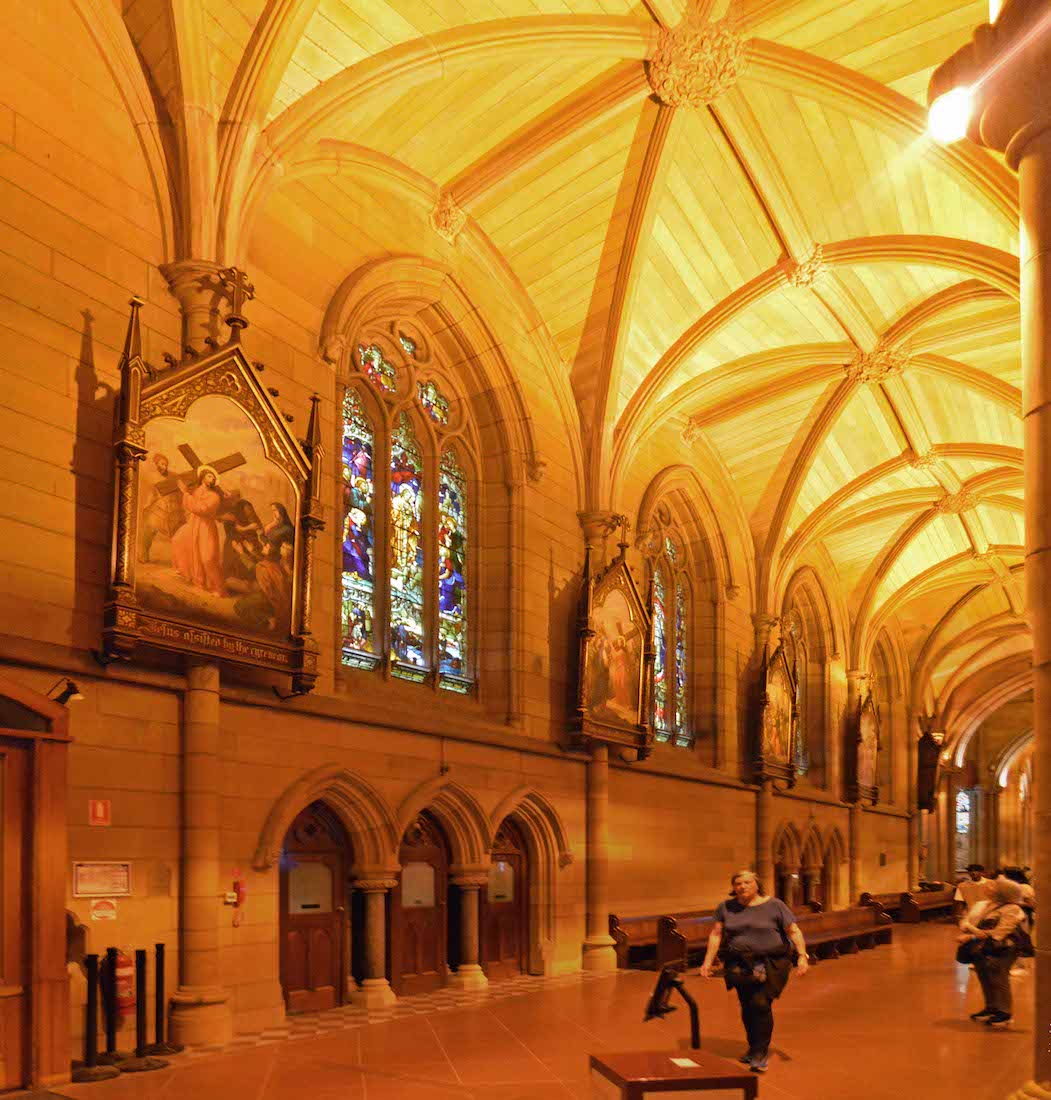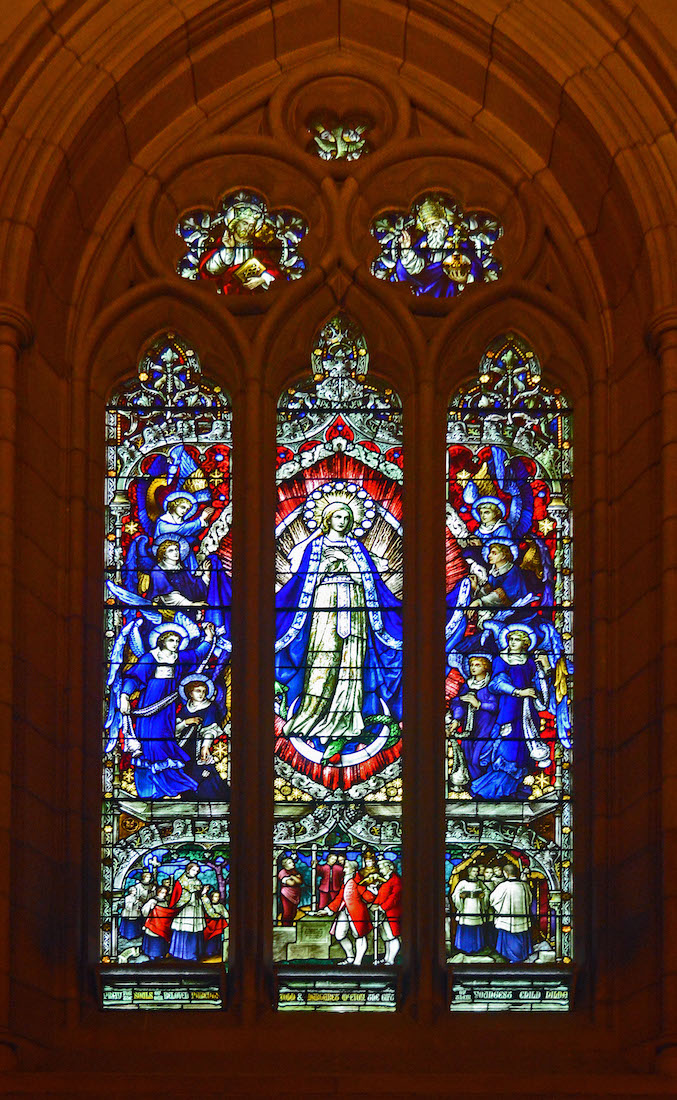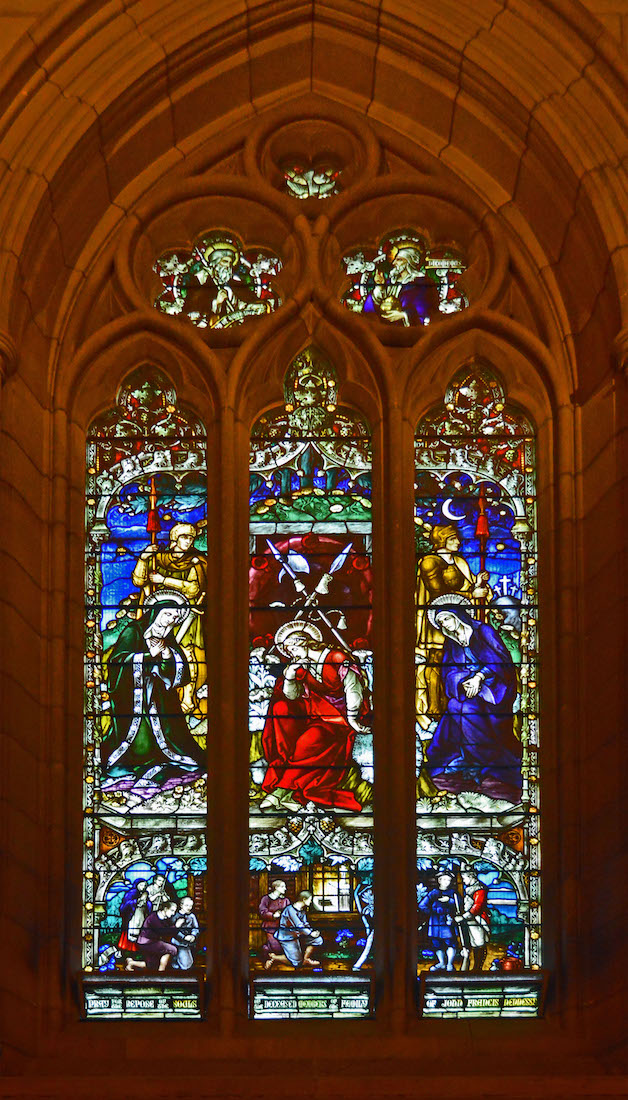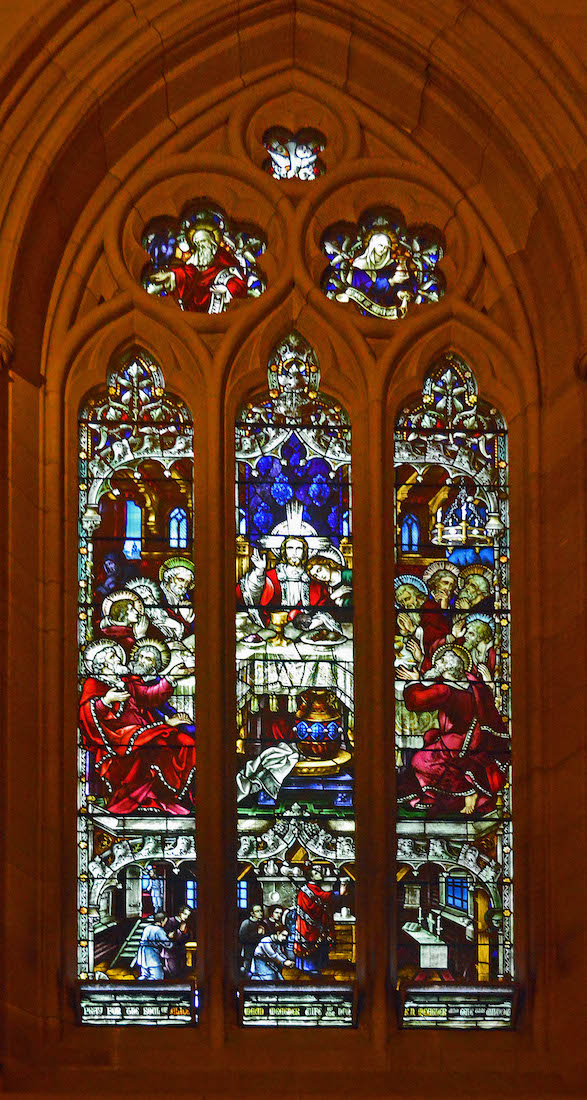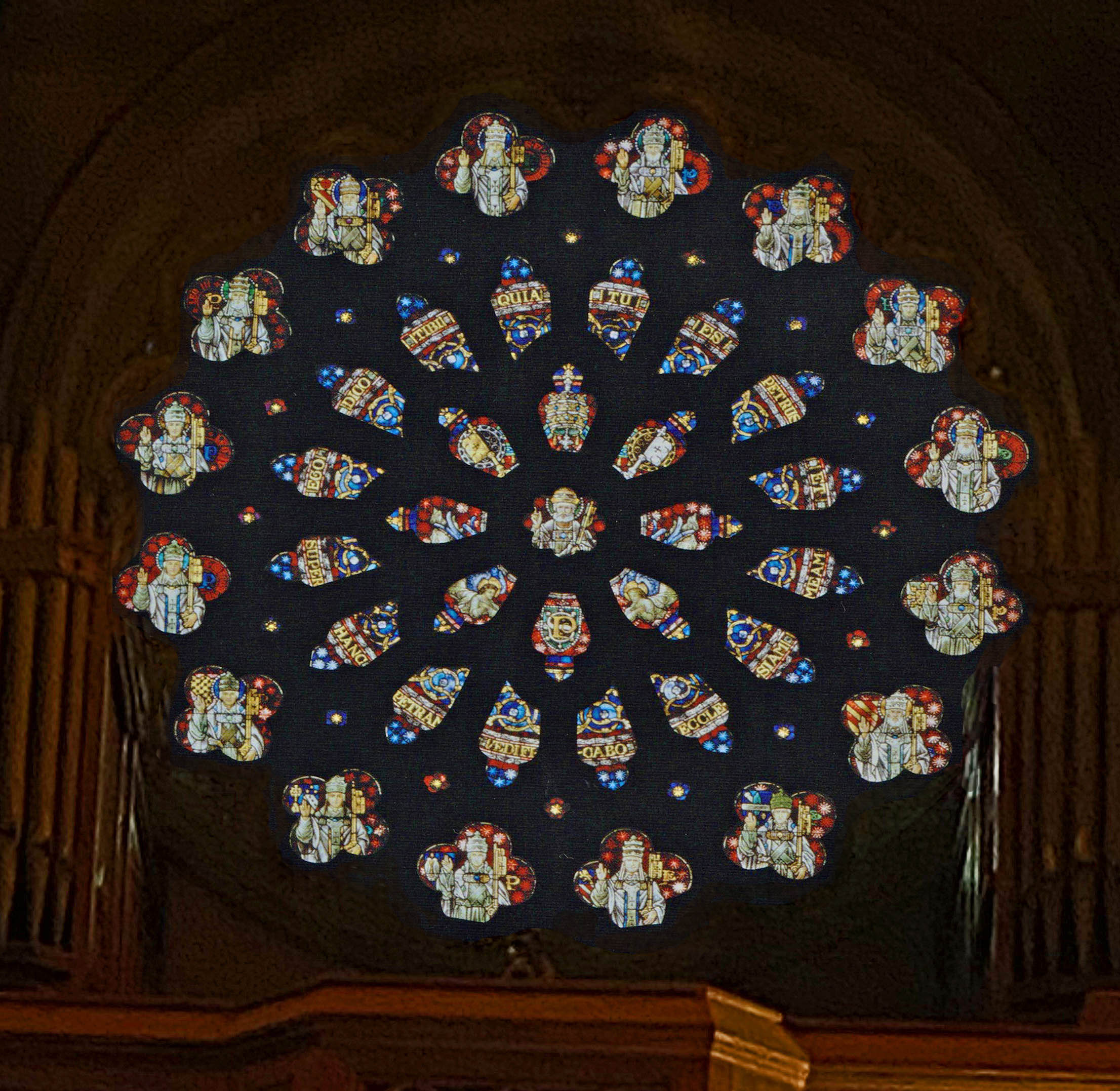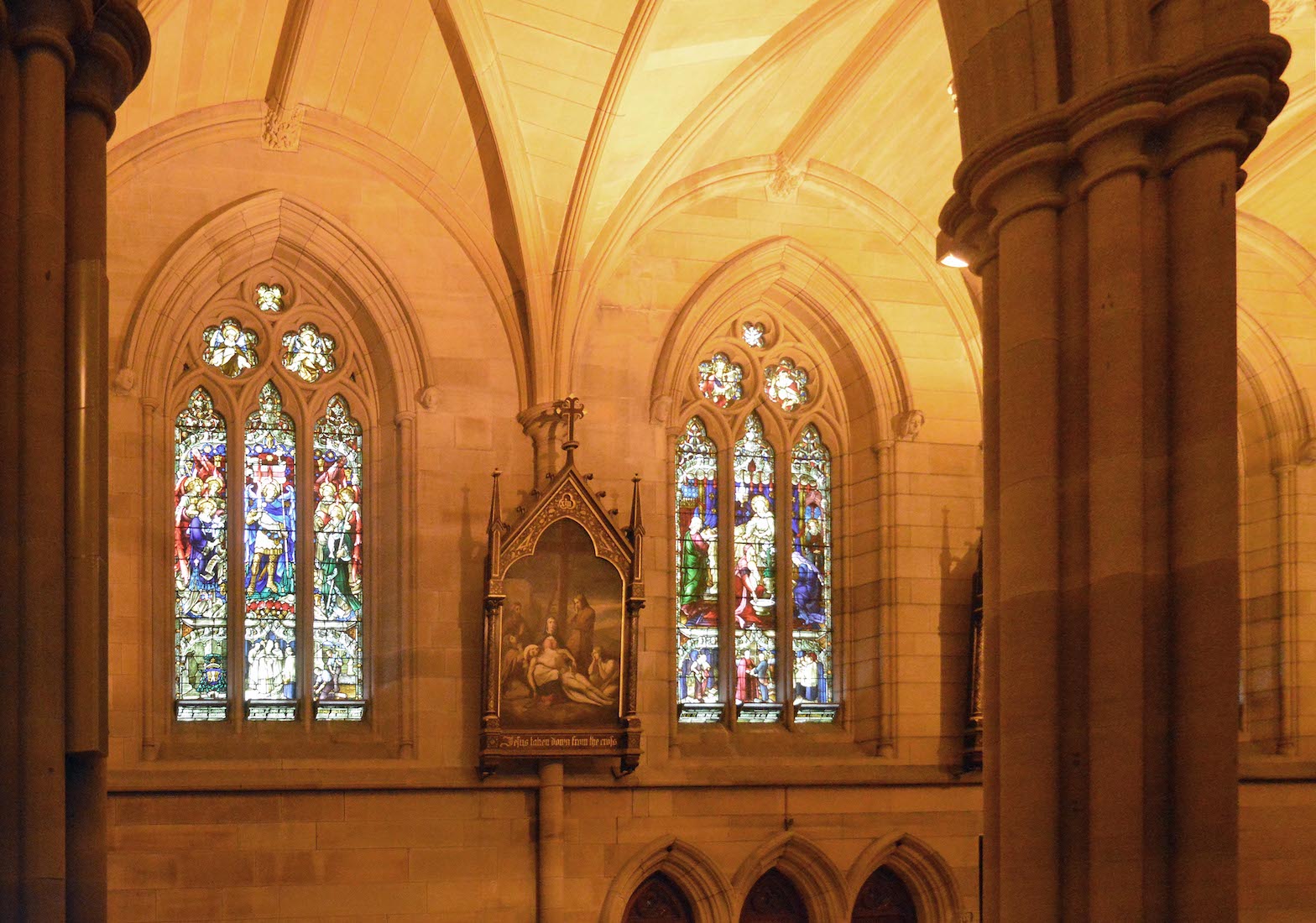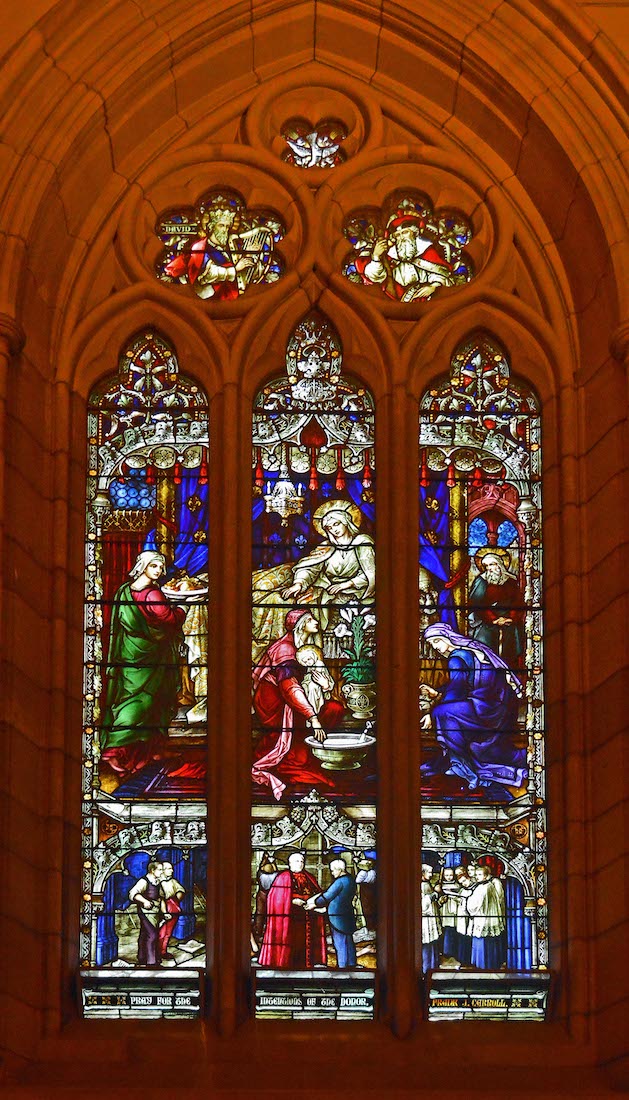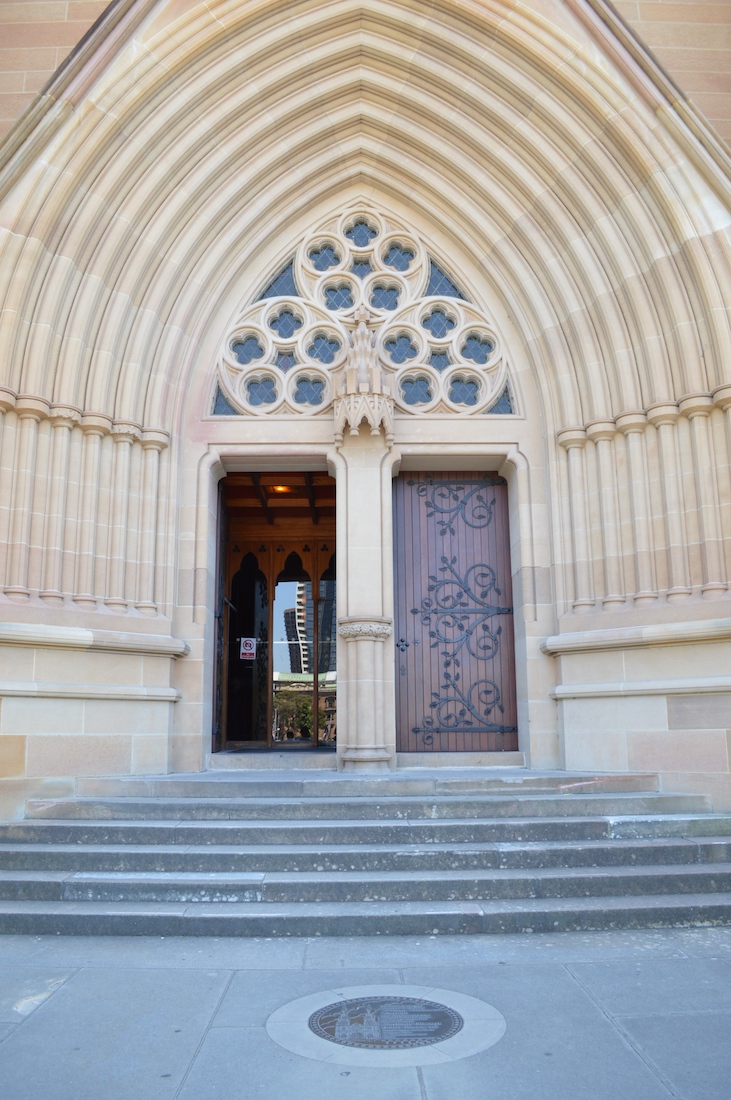
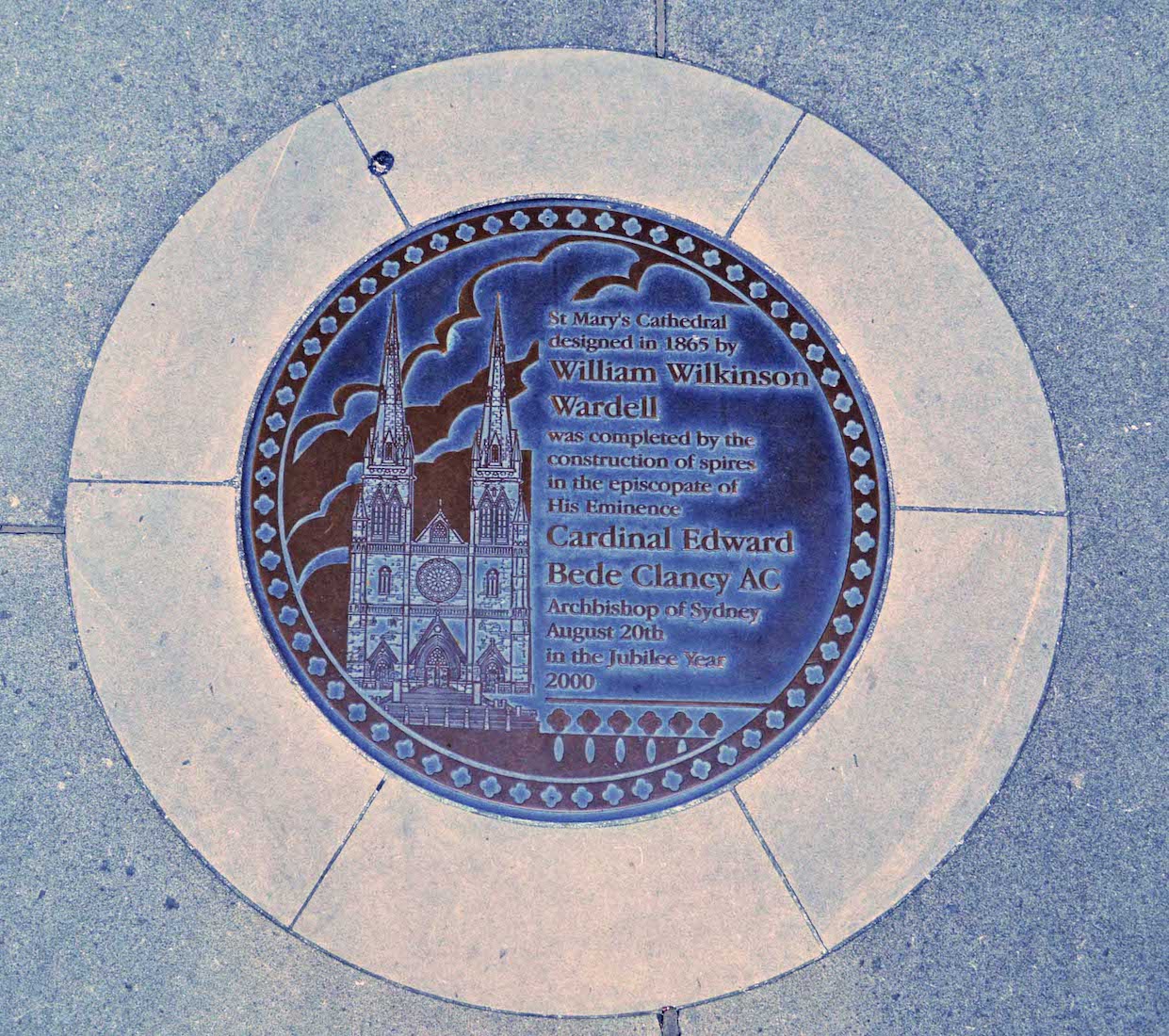
The West entrance is appropriately grand for this important Cathedral. A recessed set of Gothic arches frames the doorway. Above the door is a triplet of small rose windows, each with five-fold symmetry. The doors are strengthened and decorated with scrolled wrought iron hinges. •• In the pavement in front of the entry is a round plaque which reads: St Mary’s Cathedral designed in 1865 by William Wilkinson Wardell was completed by the construction of spires in the episcopate of His Eminence Cardinal Edward Bede Clancy AC, Archbishop of Sydney August 20th in the Jubilee year 2000. PLAN
22. INSIDE THE WEST DOOR
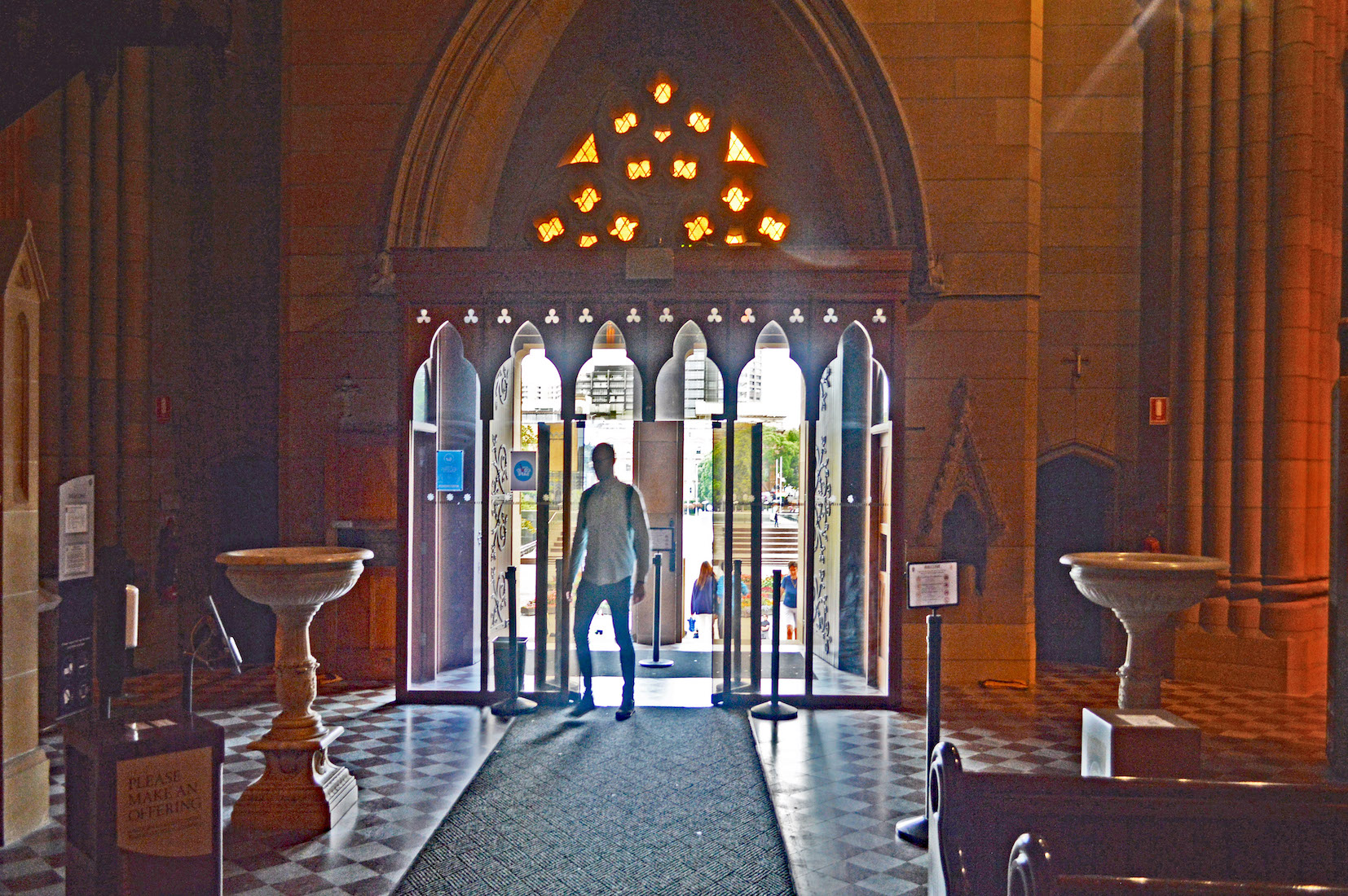
We enter through the West doors into the relative darkness of the Cathedral. Above the door is a small array of golden quatrefoil glass panels. To either side of the entry is a large stoup containing holy water.
23. NAVE
Ahead of us is the long nave leading down to the nave altar and high altar. The central nave is lines with multi-column pillars, and there is a stained timber roof above. The nave has an overall strong golden-brown colour which visitors may or may not find appealing. This at least partly due to the clerestory windows. Because of the brightness of Australian sunlight, it was decided at the time of construction to glaze the clerestory with yellow glass. This glazing has darkened over the years, permitting little light to enter.
24. WIDER NAVE VIEW
The Cathedral is constructed of dressed Sydney sandstone, and is 107 metres in length. The occasional TV screen shows that St Mary’s has embraced modern technology.
25. NORTHWEST CORNER
The Cathedral has two Western towers with spires. With many cathedrals this is obvious internally with designated tower rooms, but with St Mary’s the columns and supporting arches of the nave continue back to the West wall. The lower West wall has three entryways right across, but in the Northwest corner there is a crucifix on the North wall with a stained glass window above. For reference we number the nave windows from the West end.
26. NORTH NAVE WINDOW 1 AND CRUCIFIX
The crucifix shows Christ on the Cross with Mary and John keeping watch near the base. The window illustrates the legend of St Martin of Tours (died 397), who, riding past a beggar, slashed his cloak in half, giving half to the beggar. Martin later came to realise that the beggar was Christ himself. •• We number the nave windows from the West end.
27. NORTH NAVE WINDOW 2 ABOVE CRYPT STAIRS
Just to the right of the crucifix is a large descending staircase which leads to the crypt. Unfortunately, at the time of my visit, there was no public access to the crypt. This window, the Window of St John, is above the staircase. It shows Christ in glory. At the base of the window we see St John writing his account of the life of Jesus. St John’s eagle icon is shown at bottom left, and at bottom right an angel with the text: ‘The Light shineth in darkness’.
28. STAIRS TO THE CRYPT
The Crypt is the resting place of some of Australia’s most important Catholic leaders. Pioneer cleric John Joseph Therry and eight Sydney Archbishops are laid to rest here.
29. CRYPT
The Crypt is a breathtaking cavern of striking architecture and ornate design. It is highlighted by the magnificent terrazzo floor, considered to be one of the finest mosaic floors in the world. It was created by the Melocco Brothers, who introduced terrazzo flooring to Australia.
30. FALLEN SOLDIER
We follow East past the crypt staircase along the North nave aisle. Here we find the sculpture ‘The Tomb of the Unknown Soldier’ by George Lambert. It was the gift of Roman Catholic soldiers and sailors. Lambert received the commission for this work in April 1928. His assistant Sten Snekker was the model. Lambert asked Arthur James Murch to assist him in modelling the figure, and gave Murch credit for this by asking him to co-sign the sculpture. The work was sent to London for casting into bronze, and was unveiled 26 July 1931 after Lambert’s death.
31. NORTH GALLERY 3
The tomb lies in the third gallery from the West. There is a stained glass window above, and we also glimpse two of the Cathedral’s Stations of the Cross. The window, the Window of St Matthew, shows the Nativity with Mary and the young Jesus at centre, Joseph at right, and the wise men under the star at left. At the base of the window we see the disciple Matthew making notes.
32. STATIONS OF THE CROSS
The Stations of the Cross are a striking reminder of the passion and death of Jesus Christ and His sacrifice to redeem the world. These Stations of the Cross were painted in oils by L. Chovet of Paris and selected for St Mary’s by Cardinal Moran in 1885. In 2020 and 2021 there was a significant effort to bring these Stations back to life. It was a laborious process, but through Cathedral donations, the conservation team, based in Alexandria, carefully and masterfully restored these Stations. All 14 Stations of the Cross can be viewed here.
33. SHOP
Just past Station of the Cross VI, a small but attractive shop connects the nave through to the exterior North wall of the Cathedral.
34. NORTH AISLE
The North nave aisle is simple in format: alternating stained glass windows and Stations of the Cross along the upper level, and sets of three confessionals in alternate galleries along the bottom level. Here the edge of the shop door can just be seen at left.
35. NORTH WINDOWS 4, 5
The next four windows on the North side, together with the corresponding four windows on the South side form a set of eight Historical Windows. The two shown here are numbers 3 and 4 in this set. In the left window (HW 4, 1835), Jesus confronts Peter by the Sea of Galilee with the instruction to ‘Feed my sheep’ (John 21:15–17). The bottom panels record the 1835 landing in NSW of the first Catholic Bishop, John Bede Polding. •• The window at right (HW3, 1821) depicts a pregnant Mary, the ‘Immaculate Conception’. The blue robe is a symbol of purity, and she has a defeated serpent underfoot. The lower panels depict the 1820 arrival of the first official Catholic chaplains Fr Philip Connelly and Fr John Joseph Therry, the laying of the foundation stone of St Mary’s Cathedral by Governor Lachlan Macquarie the following year.
36. NORTH NAVE WINDOWS 6, 7
We now come to the first two Historical Windows. The first window (HW#2, 1818) past the shop shows Mary of Clopas, Mary Magdalene and the Virgin Mary (in blue) at the tomb of Jesus. The bottom scenes show a Sydney house where the Blessed Sacrament was kept. •• The adjacent window (HW1, 1803) shows Jesus and the disciples at the Last Supper. The bottom scenes are of the first public mass held in a house in Sydney by Fr James Dixon. At top are images of God the Father, the Virgin Mary, and the dove of the Holy Spirit.
37. CENTRAL VIEW TO WEST WALL
As we cross to the South side of the nave, we look back Westward along the central aisle. In particular we notice the West rose window, the full glass array above the West doors, and the balcony. We shall shortly see that access to this balcony is by steps on the South side of the entry. In 1942 a pipe organ built by Joseph Howell Whitehouse of Brisbane, (1874–1954), was installed up in this balcony.
38. WEST ROSE WINDOW
The West Rose WIndow is nearly eight metres in diameter and has 57 separate lights. It is called the Papal Window, and it shows the head of St Peter at the centre, surrounded by the heads of sixteen Popes who are identified by name or coat-of-arms. Clockwise from the top, the popes are: St Celestine I, St Benedict II, St Sergius I, St Paschal I, St Leo IX, St Pius V, Pope Leo XIII, Pope Pius IX, Pope Gregory XVI, Pope Pius VII, Pope Innocent III, St Gregory VII, St Leo IV, St Leo III, St Gregory the Great, and St Eleutherius.
39. SOUTH NAVE WALL EAST
We move across to the East end of the South nave wall. The format of windows and Stations is the same here as on the North side. The stained glass windows in the Cathedral were crafted in England, at the Hardman studios of Birmingham, from 1881 onwards. We look at the first two of these.
40. SOUTH NAVE WINDOWS 7, 6
Crossing to the South wall of the nave, we come to the Historical Windows 8 and 7. ••• In the left window (HW8, 1905) we see the Archangel Michael, often depicted as having killed a dragon (defeated the Devil, Revelation 12:1–9). It is interesting that he is posing with the English flag. Clockwise from the left are six other archangels identified by a letter: Gabriel (in blue), Chamuel, Uriel, Jophiel, Zadkiel and Raphael (in green). The scenes at the bottom of this window shows Archbishop Michael Kelly performing the consecration of St Mary’s Cathedral. ••• The theme of the next window (HW7,1905) is the birth of Mary, with parents St Joachim and St Anne. The scenes at the bottom continue to relate to the consecration of St Mary’s. Ancestors of Mary, King David and Jesse appear at the top.


